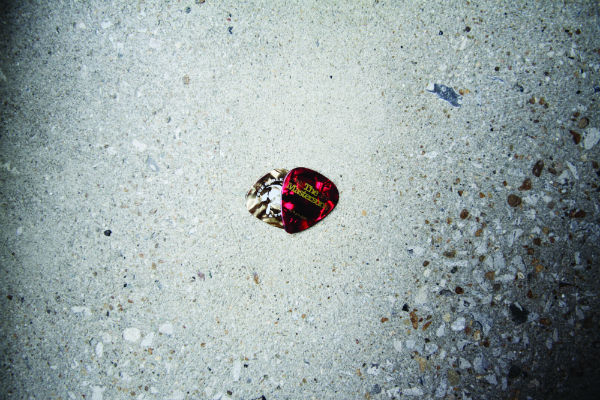Videos by American Songwriter
In the 1970s, I lived in Atlanta where I played on many “jingle” sessions at a wonderful place called Doppler Studios. We did jingles for Dodge, Coca-Cola, McDonalds and dozens of banks and retail stores. Some of the clients were really big ad agencies, like McCann-Erickson, who had the Coca-Cola account. At many of these sessions, the “producer” of the session was someone from the ad agency who really didn’t know much about music.
Ad agency people are famous for saying things like “Make the flutes more ‘chunky,” or, “I’d like the piano to sound ‘purple.’” Anyway, I was playing acoustic guitar on this session and I was in an isolation booth just out of the line of sight of the “producer.” I remember he was tall, blonde and wore a tan cardigan with a bow tie. You know, the creative type.
Anyway, he wanted the guitar to sound “brighter.” He asked me if I could use a different guitar. He didn’t know that I only had one guitar. So I made some noise opening and shutting my guitar case and made a couple of minor adjustments. Then I strummed a couple of chords. He said “yeah! That’s it! That one’s much brighter!”
And it really did sound brighter, but it was the same guitar. So my question to you is: “What did I do?” I did two things: (1) I played closer to the bridge and (2) I switched to a lighter guitar pick. (I’m talking here about plectrums, or “flatpicks”, as opposed to thumbpicks or fingerpicks.)
Most guitar players choose a pick because it feels right to them. There’s nothing wrong with that, but have you ever compared the sound of the many different guitar picks available today? My main acoustic guitar is a Santa Cruz OM, which I love. I can get more than one sound out of it by keeping a wide variety of picks in my case at all times. The sound is affected by several factors, the most important being: (1) the thickness of the pick (2) the material from which it is made, and (3) the shape of the tip of the pick
Thickness
Picks have been designated as thin, medium and heavy for many years. But in the age of specialty, you can choose a pick’s thickness by the millimeter. A thin pick would be about 0.38mm to 0.65mm . A medium is from .65mm to .73mm. Medium/heavy would be between .73mm and .88mm. Heavy would be from .88mm to 1 mm. An extra heavy pick could be from 1 to 3mm thick. If you take three picks made of the same material, the thicker the pick is, the warmer or darker it sounds. A thin pick will sound brighter, and you will hear more of the sound of the pick hitting the strings. In general, lighter picks are used more for strumming than for picking and can be mixed in a track so that it’s more of a percussion instrument than chordal accompaniment, because of the bright sound of the pick. Thin picks bend a lot, so they’re not the best choice for fast picking.
For playing fast solos with a lot of articulation, thicker picks are more popular because they allow more control of the pick. Medium picks are popular because they’re pretty good for rhythm and lead playing. If you play metal on an electric guitar, you’re gonna need a thicker pick for chords and lead playing.
Material
Before the 20th century, picks were made of bone, wood, quills and other natural materials. For players of acoustic instruments, the Holy Grail of plectra is one made from tortoise shell. The feel and sound of those early 20th century picks is so sought after that a real tortoise shell pick might sell for over $100 on the black market. (Buying and selling tortoise shell has been illegal since 1947.)
In the 1920s, Luigi D’Andrea, a Neopolitan immigrant in New York City started making picks out of celluloid, a kind of plastic. The D’Andrea company is still one of the largest pick manufacturers in the world and makes many of the picks you see under other companies’ logos. Celluloid cornered the market for many years. Now guitar picks are made from many types of plastic including nylon, Delrin, Ultem, Lexan, Acrylic and Delrex. Many of these materials were made to simulate the sound and feel of tortoise shell.
Shape Of The Tip
The sharper the pick is, the more articulation and accuracy you get, along with a brighter tone. If you take your pick and turn it around so that you’re playing with the more rounded edge, it gives a smoother and softer attack, usually better for strumming.
In the end, it’s really a matter of personal preference. I recommend that you take your guitar (with fresh strings) to the nearest guitar store and sample a wide variety of picks. You’ll find a huge difference in the sound and feel. If you find one you love, buy a lot of them, because some companies decide to change the shape or material of a pick, or may discontinue production of the one you like most. Try out some weird picks like The Jellyfish , which uses multiple metal tines for special effects. I order my custom personalized picks from www.promoheadquarters.com .
Interested in learning more? Take a look at this article about the best picks for guitar!

